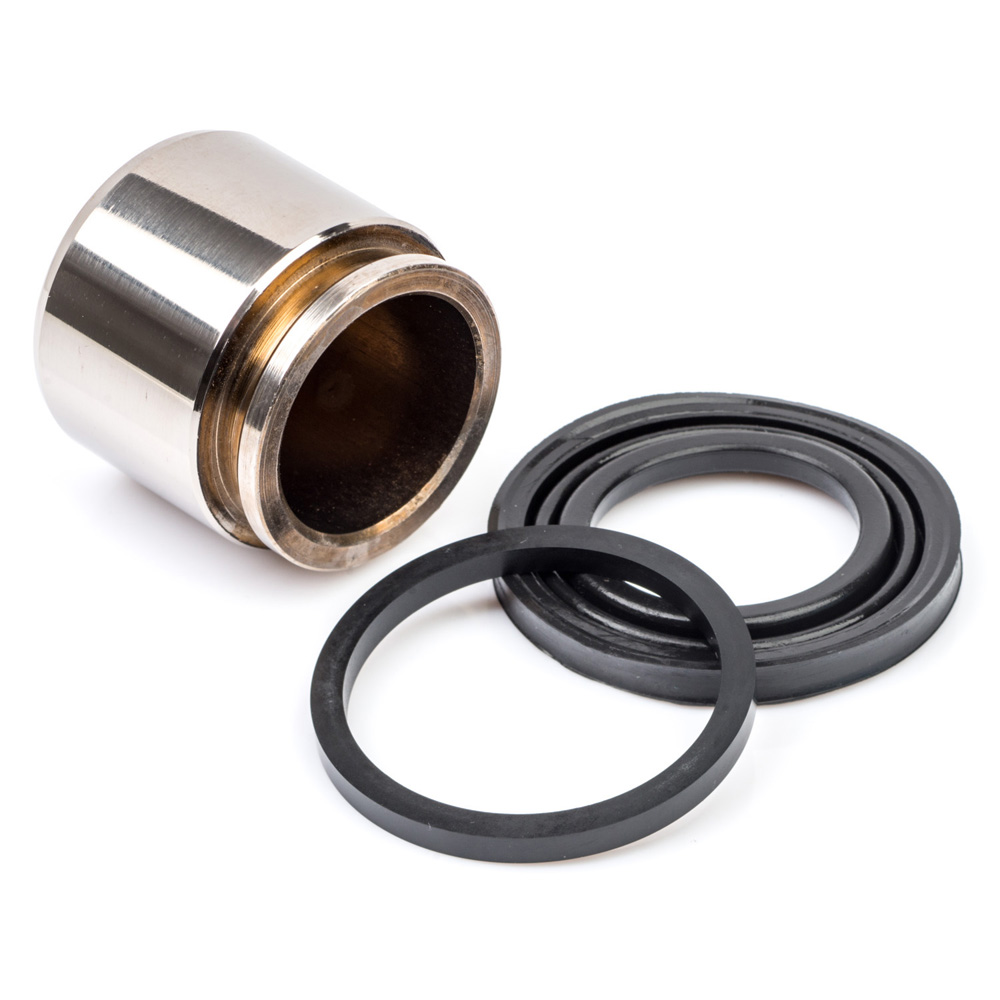
To slow down the wheel, friction material in the form of brake pads, mounted on the brake caliper, is forced mechanically, hydraulically, pneumatically, or electromagnetically against both sides of the disc. This is connected to the wheel and/or the axle. The disc is usually made of cast iron, but may in some cases be made of composites such as reinforced carbon–carbon or ceramic matrix composites. Drums are also prone to "bell mouthing" and trap worn lining material within the assembly, both causes of various braking problems.
#Brake caliper piston driver#
This tends to give the driver a better "feel" and helps to avoid impending lockup. By contrast, a disc brake has no self-servo effect and its braking force is always proportional to the pressure placed on the brake pad by the braking system via any brake servo, braking pedal, or lever. Most drum brake designs have at least one leading shoe, which gives a servo-effect. Disc brakes also recover more quickly from immersion (wet brakes are less effective than dry ones). As a consequence discs are less prone to the brake fade caused when brake components overheat. Ĭompared to drum brakes, disc brakes offer better-stopping performance because the disc is more readily cooled. Mass production began with the 1949–1950 inclusion in all Crosley production, with sustained mass production beginning in 1955 Citroën DS. The Jaguar racing team won, using disc brake-equipped cars, with much of the credit being given to the brakes' superior performance over rivals equipped with drum brakes. In the 1950s, there was a critical demonstration of superiority at the 1953 24 Hours of Le Mans race, which required braking from high speeds several times per lap.

After the war, technological progress began to arrive in 1949, with caliper-type four-wheel disc brakes on the Crosley line, and a Chrysler non-caliper type. Successful application began in airplanes before World War II, and even the German Tiger tank was fitted with discs in 1942. Other designs were not practical or widely available in cars for another 60 years. In 1902, the Lanchester Motor Company designed brakes that looked and operated in a similar way to a modern disc-brake system even though the disc was thin and a cable activated the brake pad. Almost all products that do this are either silicone-based or synthetic.The development of disc-type brakes began in England in the 1890s. It’s specially engineered for the combination of metal parts and rubber seals that make up your brakes, and its objective is to play well with both substances. Some caliper greases will work well on other parts of your car and even in non-auto-related DIY jobs.īrake caliper grease is not a universal lubricant. Another way lubricant protects your brakes is similar to how paint protects your car: by putting a barrier between delicate parts and the elements.

Caliper grease provides not just lubrication, but also protection. Heat, in turn, can damage unprotected components. Brakes work by applying friction, which creates a lot of heat. Here are just a few more reasons to find a good brake caliper grease:

It might seem counter-intuitive to lubricate a device that’s supposed to slow your momentum, but your brakes can’t cut your speed if they aren’t working efficiently themselves. Brake caliper grease reduces friction, decreasing the response time of your brakes and cutting down on noise.


 0 kommentar(er)
0 kommentar(er)
